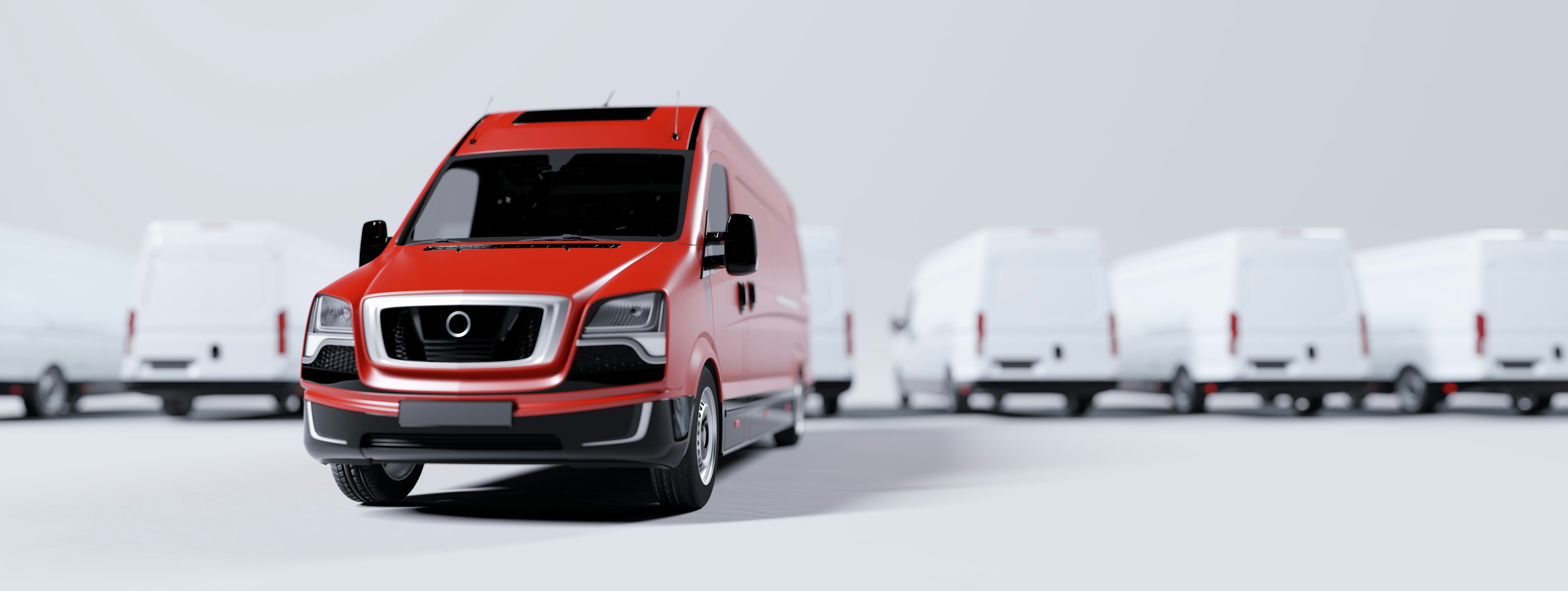Your fleet vehicles are more than just a way to get your employees from point A to point B. In fact, a fleet of reliable, efficient vehicles is the backbone of your business, keeping your operations productive and profitable. But building a fleet requires a significant upfront investment—and sometimes, those funds can be hard to come by if your cash is required for other parts of your business.
To avoid a big down payment and hefty monthly payments that tie up your capital, commercial vehicle leasing through either an open- or closed-end lease can be an ideal way to build your fleet. Each type of lease has its own advantages, so it's important to understand the differences between them to make sure that you’re getting the lease type, terms, rates, and conditions that will work for your specific business goals and circumstances.
Closed-end leases: The basics.
Closed-end leases are common in the retail world, where an individual can walk into a dealership and lease a brand-new car for a determined amount of time; at the end of the lease, they can return the vehicle and walk away, extend the lease, or purchase for the predetermined value. The same principle applies for closed-end leases in the world of fleet management, but there are some key differences to keep in mind.
In the most basic terms, a closed-end lease is when the leasing company (or other lessor) assumes the vehicle’s depreciation risk. While certain parameters are set at the beginning of the lease for when the vehicle is returned (think mileage, overall vehicle condition, etc.), the lessor is ultimately responsible for the difference between the vehicle's actual market value at the end of the lease and the residual value that was agreed upon at the beginning. The lessee will never have to pay more than the agreed-upon monthly payments, regardless of how much the vehicle depreciates.
Closed-end leases are typically very structured: They have a set length, usually ranging from 12 to 48 to 72 months, and come with a fixed monthly payment and an annual mileage allotment. At the end of the lease, you can simply return the vehicle and walk away, unless you owe fees for excess mileage or damage. You can also choose to extend the lease—or, if you decide to take ownership of the vehicle, you can buy it at the residual value predetermined at the beginning of the lease.
Closed-end fleet leases are ideal for companies that are on strict budgets or need predictability in their leasing operations. However, there is a common misconception that closed-end fleet leases don’t offer any flexibility in terms of mileage. While this is often true in the retail space, where leases come with significant restrictions, Mike Albert Fleet Solutions offers a mileage credit program and an unlimited mileage program to accommodate businesses that need greater mileage flexibility.
Open-end leases: The basics.
In an open-end lease, the lessee (e.g., the fleet owner) takes on the vehicle’s depreciation risk and will be responsible for the difference between the vehicle's actual market value at the end of the lease term and the residual value that was agreed upon at the beginning of the lease.
The structure of an open-end lease includes a minimum term, typically 12 months; after that, the lease converts to month-to-month, and the lessee can terminate the lease at any point after the term ends. When that happens, you can turn in the vehicle for resale; you’ll get the profit if the market value exceeds the pre-determined residual value, or pay the difference if the market value is less. Either way, the total cost of ownership isn’t known until the vehicle is remarketed.
Open-end leases offer more flexibility than closed-end leases, as the lessee is not limited by a set mileage allowance. This can be a major advantage for businesses that have fleets serving a wide area or are always on the road. Additionally, open-end leases can be less expensive than closed-end leases, as the lessor is not taking on the risk of depreciation.
However, open-end leases can be more complicated than closed-end leases—as the fleet manager, you will be responsible for tracking the vehicle's market value and planning ahead for any payments that might be due at the end of the lease. And open-end leases are inherently riskier for the lessee, due to the possibility of owing a significant amount of money if the vehicle depreciates more than expected.
When is one lease option better than the other?
Consider a close-end lease if:
- You need to know your total cost of ownership upfront.
- You need fixed monthly payments to meet a fixed budget.
- You don’t want the risk and worry that comes with vehicle depreciation and remarketing, such as market price volatility, rate fluctuations and seasonal resale influences.
Consider an open-end lease if:
- You have remarketing expertise and want to try to resell your vehicles for a profit.
- Your vehicles have been specially upfitted for on-the-job tasks.
- Your fleet has frequently changing needs.
- Your vehicles are subjected to rough usage (like hauling heavy loads, driving on rough terrain, or operating in heavy-duty industries with greater risk of damage).
Key considerations for fleet leasing.
Making the right leasing decision for your fleet demands an intimate understanding of your operations and needs. When helping our clients determine the best fit for their business, we ask a litany of questions to pinpoint their priorities and challenges, including:
- Mileage: Is your mileage average and consistent, or highly variable? If your vehicles rack up a lot of miles (or you can’t consistently predict what the mileage will be at the end of the lease), an open-end lease might make more sense.
- Driving terrain & usage patterns: Are your fleet vehicles regularly operating in rough terrain or racking up high mileage? Or are they putting in mostly highway miles and experiencing normal wear-and-tear? Closed-end leases are ideal for fleets that will experience minimal or average wear.
- Cash flow: How much predictability do you need? Closed-end leases have set monthly payments and offer no surprises; an open-end lease can give you a windfall or a charge, depending on the vehicle condition and market.
- Terminal Rental Adjustment Clause (TRAC): Open-end leases will include terminal rental adjustment clause, which provides for an adjustment (either an additional payment from the lessee to the lessor or a refund to the lessee from the lessor) based on the difference between the market value and residual value. Anyone going into an open-end lease needs to be comfortable with taking on the risk of potentially owing money at the end of the lease.
- Fleet size & makeup: How many vehicles are in your fleet, and how many are being leased? The composition of your fleet can determine the best lease for your business parameters.
- Flexibility: Do you need the flexibility to swap out vehicles based on job requirements or market factors, or will your fleet makeup stay fairly consistent? Open-end leases are ideal for organizations that need more flexibility.
- Customization: Are you planning to upfit your vehicles with special equipment for particular jobs? If so, your upfit could impact the resale value of the vehicle—and an open-end lease might be a better fit.
The best way to decide which type of lease is right for your fleet? Lean on the experts. A seasoned fleet management professional (or a team of them) can help you understand the different options available to you and choose the leasing strategy that best meets your needs.
Skills covered in the class
Financial Management
Operational Efficiency
Brand Image
Data-Driven Decision Making
Did you enjoy this class?
Share it with your organization and colleagues.
Sign up for our newsletter for the latest information about the fleet industry.
Sign up for our newsletter for the latest information about the fleet industry.



